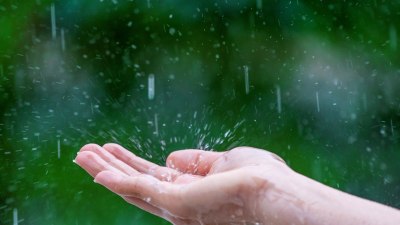What Causes Rain to Smell Sweet
Discover the fascinating science behind the sweet smell of rain and the compounds responsible for this phenomenon.

This image was created with the assistance of Freepik
Have you ever taken a walk after a rain shower and been greeted by an unmistakable fresh, sweet smell in the air? This sensory experience is not just a figment of your imagination; it has a scientific explanation rooted in both chemistry and biology. The pleasant scent that often accompanies rain is primarily due to a compound called petrichor, along with the contributions of other natural elements and processes. In this article, we will explore the reasons behind the sweet smell of rain, the science of petrichor, and the various factors that contribute to this delightful phenomenon.
Petrichor is a term that was coined in 1964 by two Australian researchers, Isabel Joy Bear and Richard G. Thomas, who published a paper on the subject in the journal Nature. They defined petrichor as the smell that arises when rain falls on dry soil. This smell is specifically attributed to the release of oils that plants secrete during dry periods. These oils are absorbed by the soil and rocks, where they accumulate. When rain hits the ground, the water causes these oils to be released into the air, creating the signature sweet aroma that we associate with after a rainfall.
Another compound that plays a crucial role in the sweet smell of rain is geosmin, produced by microorganisms in the soil, particularly actinobacteria. Geosmin is a volatile organic compound that has a distinct earthy scent. When raindrops hit the ground, they create small air bubbles that trap geosmin and other compounds. As the bubbles rise to the surface and burst, they release these scents into the air. Geosmin itself is often described as having a rich, earthy aroma that can evoke feelings of nostalgia and freshness, further enhancing the sensory experience of rain.
The intensity of the sweet smell can vary significantly depending on factors such as the type and amount of rainfall, soil composition, and the presence of specific plants in the area. For instance, areas with rich, nutrient-dense soil tend to produce a more pronounced scent due to the higher concentration of geosmin and other volatiles. Similarly, certain types of plants release more oils than others, thereby intensifying the fragrance during and after a rainfall.
In addition to these biological and chemical contributions, the atmospheric conditions also play an essential role in how we perceive the scent of rain. Humidity levels, temperature, and wind direction can all influence the dispersion of smell particles in the air. Warm, humid days tend to enhance our ability to smell these compounds, making the sweet scent of rain more pronounced. Conversely, on colder days, the scent might be less perceptible as the cooler air can suppress the volatility of some of these compounds.
One intriguing aspect to consider is the timing of when we experience this sweet smell. After a long dry spell, the release of petrichor and geosmin can be particularly strong, as the soil has had time to accumulate oils and volatiles. This phenomenon can evoke a sense of relief and rejuvenation, as the rain not only brings water back to the earth but also a breath of fresh air. It’s fascinating to think that what we smell when it rains can elicit emotional responses and memories connected to earth and nature.
Another interesting element to explore is the human perception of the scent of rain. Research in olfactory science suggests that our sense of smell is closely tied to memory and emotion. The sweet smell of rain may evoke feelings of comfort, nostalgia, or freshness, making it a rather unique sensory experience. The brain tends to associate these pleasant smells with positive experiences and memories, potentially due to an evolutionary advantage in recognizing fertile ground and water sources.
In conclusion, the sweet smell of rain is a complex interplay of compounds, biological processes, and atmospheric conditions. It serves not only as an indicator of changing weather but also as a sensory reminder of the relationship between plants, soil, and the environment. Each time we breathe in that delightful aroma, we connect with the earth and its natural cycles in a way that transcends mere weather patterns. Whether it’s petrichor, geosmin, or a combination of other elements, the next time you step outside to greet the rain, take a moment to appreciate the sweet scent that accompanies it.
Understanding the Composition of Rain Smell
Beyond petrichor and geosmin, there are a variety of other compounds that can contribute to the sweet smell of rain. One such compound is 1-octen-3-ol, which has a mushroom-like scent and is often associated with damp environments. Additionally, various other aromatic compounds can be released from decaying organic matter in the soil when rain hits the ground. These compounds can create a rich tapestry of scents that combine to create the overall odor we experience during and after rain.
Interestingly, the presence of certain plants can also influence the smell of rain. For example, some trees and shrubs produce distinctive volatile oils that can enhance the scent during a rain event. Eucalyptus trees, for instance, are known to release a fresh, minty aroma when their leaves get wet, contributing an additional layer to the rain's fragrance.
The Role of Environmental Factors
Environmental factors, such as pollution and urbanization, can also impact the smell of rain. Industrial activities may introduce various chemical compounds into the atmosphere, which can mix with natural scent-producing agents and create a different olfactory experience. In urban areas, the scent of rain may also carry hints of asphalt or other materials that can dampen the natural sweetness we associate with rain.
On the other hand, being in a more natural environment, such as a forest or garden, will likely enhance the pleasant scent of rain due to the concentration of flora and organic materials. The combination of moist soil, plant oils, and microorganisms will result in a rich and inviting aroma, making the experience much more enjoyable.
Cultural Perceptions of Rain Scent
Culturally, the smell of rain has special significance in various societies. In many cultures, rain is celebrated as a symbol of life and fertility, often linked to agricultural practices and the growth of crops. The fragrance that accompanies rain can evoke a sense of renewal and hope, reinforcing its place in folklore and tradition. Many cultures have songs, poems, and stories that emphasize the positive feelings associated with rain, further embedding the sweet smell into human emotion and experience.
Additionally, rain and its scent have often found their way into the world of arts and literature. Poets and writers frequently utilize the imagery of rain and its accompanying fragrances to symbolize change, rebirth, and the passing of time. This overarching appreciation for rain, not just as a weather phenomenon but as a sensory experience, speaks volumes about the deep connection humans have with nature.
Scientific Research and Discoveries
Scientific research into the sweet smell of rain has expanded our understanding of biodiversity and ecosystem health. Studies have shown that the presence of geosmin can be an indicator of healthy soil, as actinobacteria thrive in environments rich in organic matter. The amount of petrichor can also provide insights into the health of plant life in an area, as healthier plants tend to produce more oils. Researchers continue to explore the complex relationship between olfactory compounds and environmental conditions, further revealing the intricate connections within ecosystems.
In conclusion, the sweet smell of rain is an intricate phenomenon that encapsulates the interplay between biological, chemical, and environmental factors. As we continue to study and appreciate the essence of rainfall and the scents it brings, we uncover not only the science behind these experiences but also a greater understanding of our relationship with nature. Thus, the next time you find yourself taking a deep breath of the sweet fragrance that follows a rainfall, remember that you’re participating in a timeless dance between water, earth, and the aromatic compounds that define our world.











